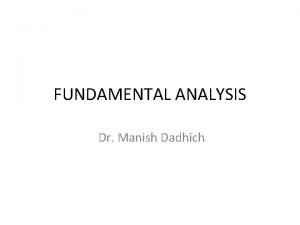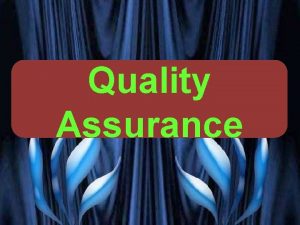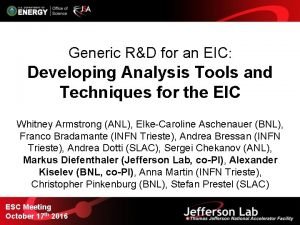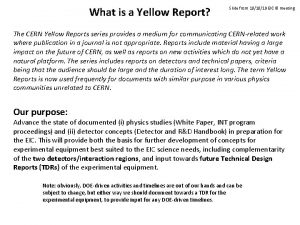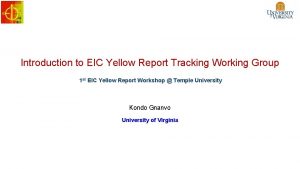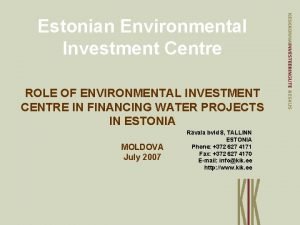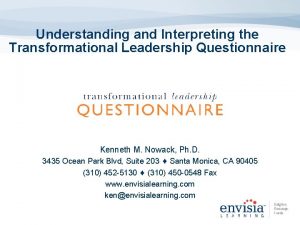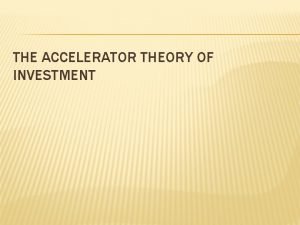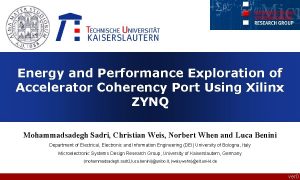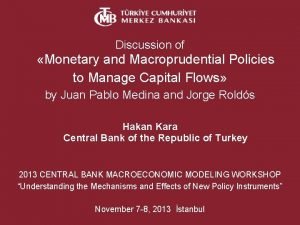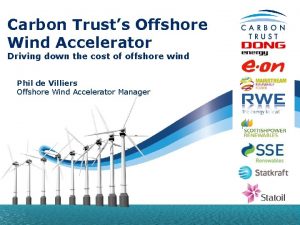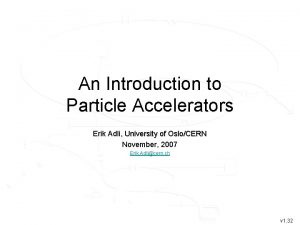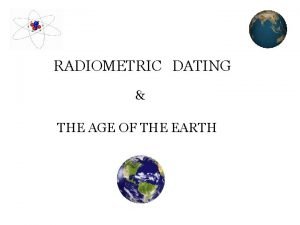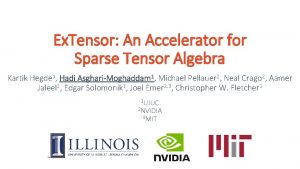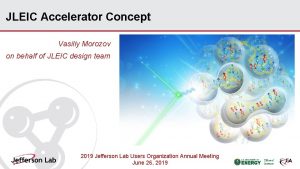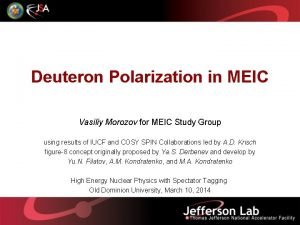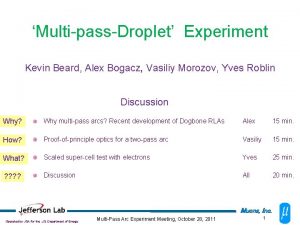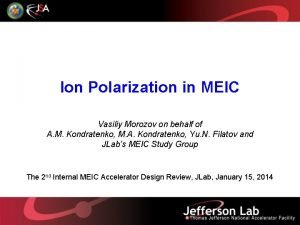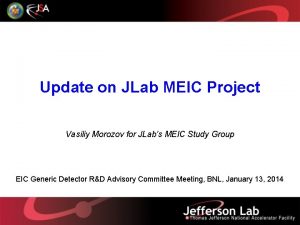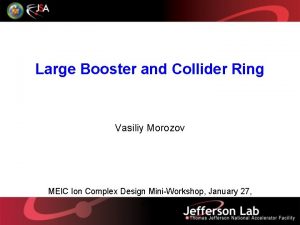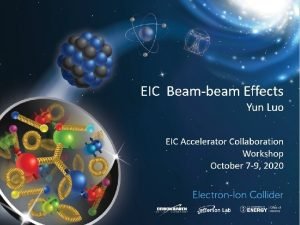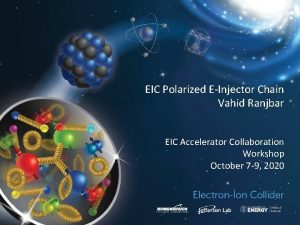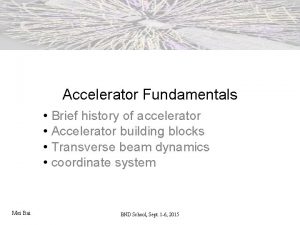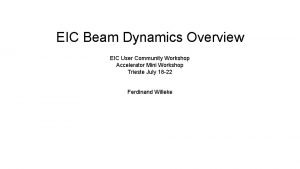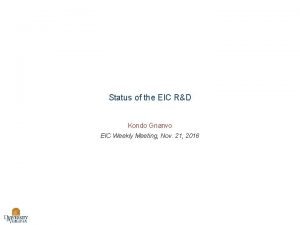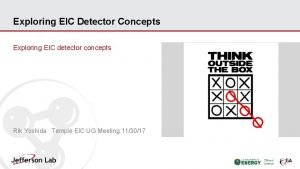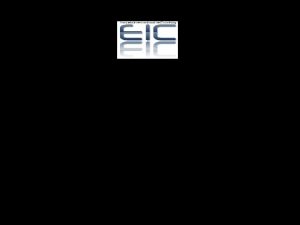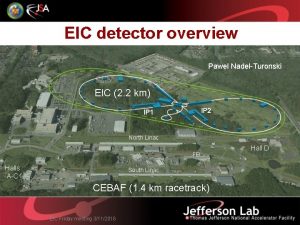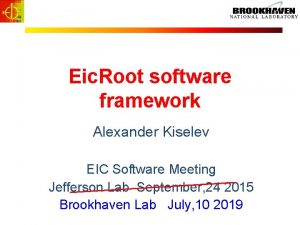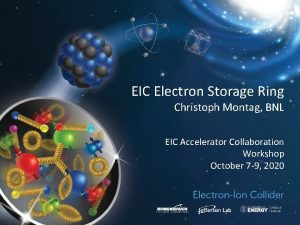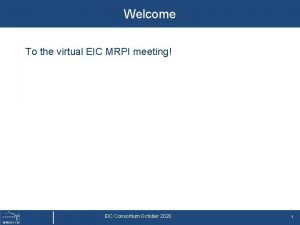EIC Second IR Design Vasiliy Morozov EIC Accelerator





















- Slides: 21

EIC Second IR Design Vasiliy Morozov EIC Accelerator Collaboration Workshop October 7 -9, 2020

2 nd IR • 2 nd IR of the EIC -Off project -Consider alternative design choices -Possibility of the 2 nd IR is one of the EIC design requirements -Complementary measurements and capabilities to 1 st IR -Interest and support of the nuclear physics community • High-level requirements -High luminosity at a low CM energy of ~60 Ge. V -Detector acceptance satisfying physics requirements (what matters most for the machine design is the forward acceptance requirements) -Compatibility with running in parallel with the baseline detector 2

Complementarity to 1 st IR 3

Crossing Angle Crossing angle - avoid parasitic collisions due to short bunch spacing - for machine elements, to improve detection - reduce detector background However, crossing angle causes - Low luminosity - Beam dynamics issues avoided by Crab Crossing As a consequence: Effective head-on collision restored beam dynamic issues resolved 4

5

Geometric and Machine Constraints 6

Ion 2 nd IR Optics up to 120 Ge. V 7

Ion 2 nd IR Optics from 120 to 275 Ge. V 8

Electron 2 nd IR Optics 9

2 nd IR Design Status 10

2 nd IR Design Optimization • Grid search and optimization in the luminosity/ detector acceptance/ beam parameter phase space • Each iteration involves - Lattice design update - Luminosity estimate - Acceptance simulation • Would like to streamline the process as much as possible • IRs optimized individually 11

Simultaneous Operation of Two IRs 12

Beam-Beam Tune Shift and Luminosity Sharing 13

Engineering Feasibility • Engineering feasibility of the most challenging magnets - Largest-aperture forward ion quad - Forward spectrometer dipole 14

Ongoing and Future Work • Extension of the electron and ion beam lines • Geometric and optical matching of the IR • Integration of the machine and detector components • Design optimization in terms of luminosity/ acceptance/ beam parameters • Simulation of detector acceptance • Evaluation of engineering feasibility of key IR elements • Chromaticity compensation and non-linear dynamics studies 15

Backup 16

Beam-Beam Tune Shift 17

Total Beam-Beam Tune Shift 18

19

Far-Forward Angular Acceptance 20

21
 Eic approach of fundamental analysis
Eic approach of fundamental analysis Myfiu account
Myfiu account Qa eic patel the
Qa eic patel the Eic software reviews
Eic software reviews Kickoff meting
Kickoff meting Yellow report eic
Yellow report eic Eic health certificate
Eic health certificate Eic european investment centre
Eic european investment centre 27 miles per gallon into kilometers per liter
27 miles per gallon into kilometers per liter Leadership accelerator questionnaire
Leadership accelerator questionnaire Limitations of accelerator theory of investment
Limitations of accelerator theory of investment Biztalk swift
Biztalk swift Accelerator forced rescan
Accelerator forced rescan Fiscal policy ib
Fiscal policy ib Accelerator coherency port
Accelerator coherency port Financial accelerator
Financial accelerator Offshore wind accelerator
Offshore wind accelerator Proton
Proton Netbackup accelerator best practices
Netbackup accelerator best practices Accelerator mass spectrometry
Accelerator mass spectrometry Coherent accelerator processor interface
Coherent accelerator processor interface Extensor: an accelerator for sparse tensor algebra
Extensor: an accelerator for sparse tensor algebra
